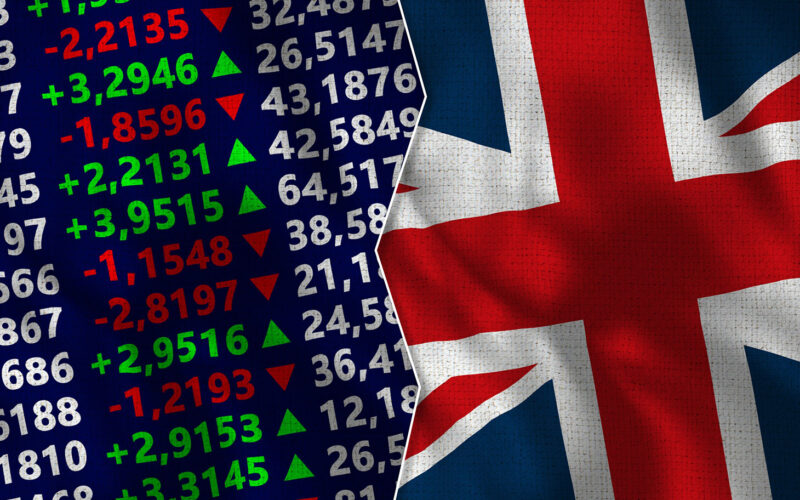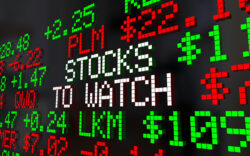Did you see the headline in the Guardian? “UK Sidesteps Worst Stockmarket Crash in Half A Century!”
Nope, I didn’t see it either.
And yet…
The United States’ tech focused Nasdaq was down 30% in the first six months of 2022 – the worst ever start to a year.
The American small-cap index Russell 2000 index posted its worst first half ever too.
The S&P 500 lost 21% – the worst performance since 1970.
Australian stocks lost A$172 billion in the first half – falling about 10%.
The Stoxx Europe 600 Index fell 17%, the German Dax was down about 19%, the Italian FTSE-MIB 22% and so on and so forth.
Meanwhile, the UK’s FTSE 100 plunged by a whopping…3%?! That’s less than its dividend yield…
And, as recently as the beginning of June, the FTSE 100 was actually up 2 percent!
Why isn’t this extraordinary outperformance of the UK’s stock market front-page news?
Well, you know why. They’ve run out of “Despite Brexit” headlines.
Actually, it might be climate change related, like everything else…
The real reason the UK’s FTSE 100 is both outperforming, and why this must not be mentioned, is that it is full of dirty energy stocks. These have performed quite well so far this year.
The speculative tech companies that performed especially badly prefer to list in the United States.
Of course, a small loss is not a gain. And, over the longer term, the FTSE 100 is still struggling to go anywhere fast. That is not to mention the fact that our index joined the plunge in June.
But, if you’re going to bang on about the FTSE 100 underperforming for years, then you should at least mention its damn impressive outperformance too.
Let’s be diplomatic and just focus on what happens next… which is something we can be gloomy about together.
We’ve used the producer price indices (PPIs) to predict inflation in the past. These measures of “factory gate prices” tell you how much inflation companies are facing, as opposed to the consumer price index (CPI) which we face as consumers.
Well, PPIs are surging as much as 20% in parts of Europe, while the CPI rarely pops its head above 10%.
You can reach two conclusions about this. Either inflation is going to continue soaring in Europe, or companies are in trouble. Today, we’ll focus on the latter in anticipation of a recession.
If PPIs are rising 20% while CPIs are up less than 10%, corporate costs are going through the roof while consumer prices are just soaring.
What do you get when you combine the two?
Surging corporate profits, if you ask City analysts…
In fact, Europe is now the only place where analysts are still increasing their corporate profit estimates. They don’t seem to have realised what’s going on.
Germany has posted its first trade deficit in 30 years. Dutch farmers are blockading borders and infrastructure (with manure). The French government is split. Italy is facing a more extreme government than in 2018. The European Central Bank hasn’t lifted a finger against double-digit inflation in some parts of the euro area.
The analysts who I follow for reasons other than entertainment purposes are largely predicting the opposite to their more amusing colleagues. We’re in for what they call an “earnings recession”, meaning a plunge in corporate profits.
In other words, companies are getting squeezed by PPI and they’re unable to pass on the increases in costs to consumers in the CPI.
This is bad news for stocks, whose prices are driven by two things. How much profit they make and how much investors are willing to pay for those profits.
The latter can seem confusing, but it’s a key part of stock market returns. So let’s quickly explore valuations.
Consider a company which makes £10 per share in profits. What are that company’s shares worth?
The answer is that it depends. Sometimes, people are willing to pay £200, sometimes £150 for that company. The measure which accounts for this range of possibilities is known as the P/E ratio – the price-to-earnings ratio. It explains why stock prices can go up and down without much changing for a company’s profits.
During the Everything Bubble, it wasn’t profits (known as “earnings” and the “E” in the P/E ratio) which went berserk. It was the P/E ratio – the price people were willing to pay for a company’s shares and the profits this entitled them to.
Over the past few months, we’ve seen the P/E ratios of stocks crash back down to reasonable levels. People were suddenly less willing to pay more per pound of profit. But earnings haven’t crashed… yet.
But an earnings recession now would reduce the “E” in the ratio, sinking stocks further again. They might look cheap right now, but not once you factor in the reduction in future profits. In other words, stocks could still be expensive.
A crash in actual earnings is precisely what you’d expect during stagflation – a period of rising costs and poor economic growth… if any. The big question is always whether companies can pass on their higher costs to consumers to maintain their profit margins.
In the 1970s, they couldn’t. And this time, with the inflationary pressure coming from company costs, it should be the same.
Companies seem unable to raise prices to cover their higher costs, as impossible as that may seem given the rate of price increases. But business is about margins. And so, if the PPI is outpacing the CPI, there’s a squeeze on.
Politicians are vilifying companies for raising prices. But they’re only passing on part of the costs which political programmes like energy policies and sanctions have triggered.
It’s the companies’ owners – investors and pension holders – who lose out.

Nick Hubble
Editor, Fortune & Freedom




